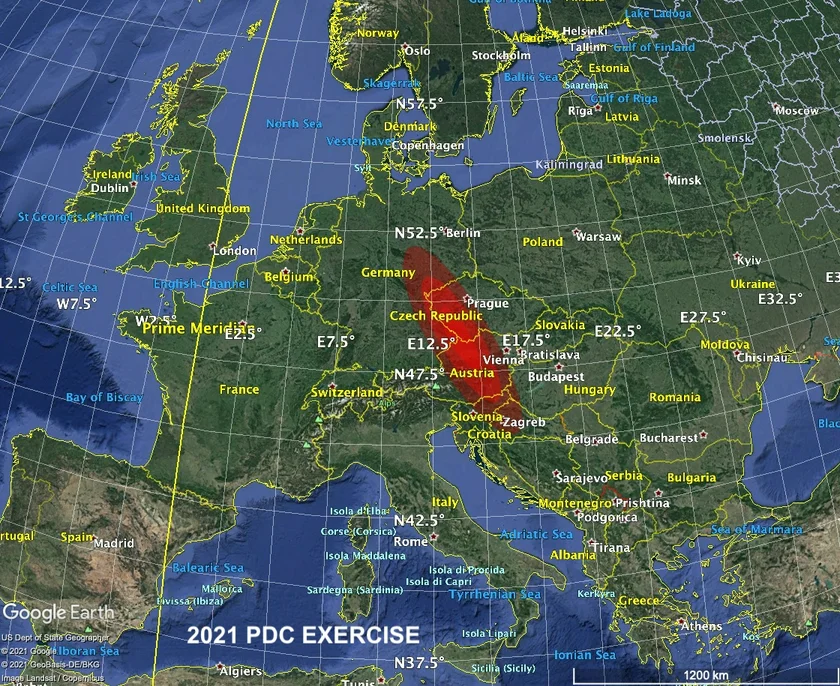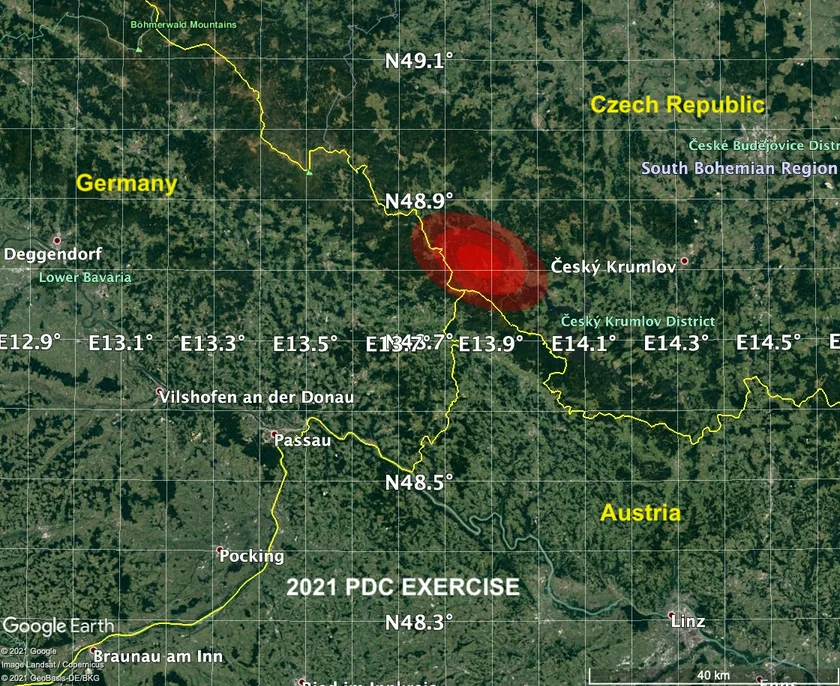A five-day NASA exercise carried out at the Planetary Defense Conference last week culminated with an asteroid striking Earth with the force of a nuclear bomb -- just outside Český Krumlov, Czech Republic.
There's no need to worry: the asteroid strike was a purely hypothetical exercise intended to gauge response from international players to a potential extinction-level threat event.
The exercise was led by NASA's Center for Near Earth Object Studies (CNEOS), with daily updates and briefings posted on its official website throughout the week during the course of the project.
Things began on Monday, April 26, with the simulated discovery of a large asteroid on a potential collision course with Earth. Initially, the impact chance was low, projected at about 1 in 2500.
Each day during the course of the exercise represented about a month in real time, with a potential impact date in late October. Daily updates represented weeks of developments in tracking the asteroid's progress.
By Day 2 (May 20) in the exercise, the asteroid's chances of impact increased to 100%, with a projected impact zone stretching from the Arctic Circle to North Africa and covering much of Central Europe.

By Day 3 (June 30), the impact zone had narrowed to Europe. Austria and Bohemia, the western half of the Czech Republic, were the center of a projected impact zone, which represented the area the asteroid would hit.
At this stage, a larger damage swath presented areas that would be directly affected by the asteroid's impact, estimated to be on the level of an nuclear bomb. The entire Czech Republic was within a 'severe' range, with Prague within a level of 'unsurvivable'.
By the final update, six days from impact, the asteroid's path had been pinpointed to a location in southwestern Czech Republic, by the German and Austrian borders near Český Krumlov. The UNESCO World Heritage Site would presumably be decimated by the impact.

The exercise was carried out to help coordinate international defense systems in the event of a worldwide threat, and establish avenues of communication for such a scenario.
"Each time we participate in an exercise of this nature, we learn more about who the key players are in a disaster event, and who needs to know what information, and when," said NASA planetary defense officer Lindley Johnson in a press statement.
"These exercises ultimately help the planetary defense community communicate with each other and with our governments to ensure we are all coordinated should a potential impact threat be identified in the future."
Due to the late discovery of the hypothetical asteroid, six months from impact, no actions were taken to attempt to alter its path. In the real-world, however, NASA is preparing the kind of technology to accomplish just such a feat.
Later this year, NASA will launch the Double Asteroid Redirection Test (DART) Mission, which will intentionally crash a space probe into the asteroid Didymos in the hopes of altering its path.
It will be the first real-world test of the kind of mission previously attempted by Bruce Willis and crew in Armageddon.












 Reading time: 2 minutes
Reading time: 2 minutes 

























